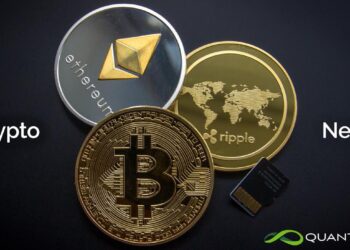The concept of money has undergone countless transformations throughout history, from barter to shells, metals to paper notes, and now, a profound leap into the digital realm. Digital currencies, often heralded as the future of money, represent a revolutionary shift in how value is created, exchanged, and stored. Far from being a fleeting trend, these intangible assets, built on cryptographic principles and decentralized networks, promise to reshape global finance, offering unprecedented levels of efficiency, transparency, security, and accessibility. This isn’t merely an incremental upgrade to electronic payments; it’s a fundamental reimagining of monetary systems, poised to redefine our financial interactions and usher in a new era of economic possibilities.
Money’s Journey Through Time
To fully grasp the disruptive potential of digital currencies, it’s essential to contextualize them within the long and storied history of money itself, understanding the problems each new form sought to solve.
A. From Barter to Physical Currencies
Humanity’s earliest economic interactions relied on direct exchange, a system with inherent limitations that eventually led to the invention of money.
- Barter System: In its simplest form, trade involved bartering goods and services directly. This was inefficient, requiring a “double coincidence of wants” (both parties needing what the other had) and making it difficult to establish consistent value or store wealth.
- Commodity Money: To overcome barter’s limitations, valuable commodities like salt, livestock, shells, or grains became early forms of money. They were generally durable, portable, and widely accepted, providing a more efficient medium of exchange and a store of value.
- Metallic Currencies: Precious metals like gold and silver, due to their scarcity, divisibility, durability, and intrinsic value, emerged as dominant forms of money. Coins and eventually standardized ingots facilitated trade and allowed for more precise transactions. This era also introduced the concept of minting and centralized control over money supply.
- Fiat Money (Paper Currency): With the rise of nation-states and centralized banks, paper money, or fiat currency, became prevalent. Unlike commodity money, fiat money has no intrinsic value; its value is derived from government decree and public trust. It offered portability and ease of printing, enabling governments to manage economies through monetary policy (e.g., controlling interest rates, inflation). This system still forms the backbone of most global economies today.
- Limitations of Physical Money: Despite their advantages, physical currencies suffer from issues like counterfeiting, susceptibility to theft, the costs of printing and transportation, and challenges with cross-border transactions (exchange rates, transfer fees). They also leave a visible trail in large transactions, leading to privacy concerns.
B. The Rise of Electronic Money and Digital Payments
The digital age brought money onto electronic ledgers, fundamentally changing how transactions occur, even if the underlying currency remained fiat.
- Bank Accounts and Electronic Transfers: The widespread adoption of bank accounts allowed money to exist as entries in a ledger, facilitating electronic transfers (e.g., wire transfers, ACH payments). This moved money away from purely physical form for many transactions.
- Credit and Debit Cards: These instruments allowed consumers to access their electronic funds instantly at point-of-sale, revolutionizing retail and consumer spending by eliminating the need to carry large amounts of cash.
- Online Payment Systems: The internet spawned digital payment platforms (e.g., PayPal) that enabled fast, convenient online transactions, driving the growth of e-commerce.
- Mobile Payments: Smartphones further accelerated this trend, turning devices into payment terminals through apps and NFC technology, making transactions even more accessible and convenient.
- Limitations of Electronic Fiat: While convenient, these systems are still centralized (relying on banks and payment processors), subject to single points of failure, often slow for international transfers, and incur significant fees. They also face issues with censorship and exclusion for the unbanked population.
C. The Dawn of Digital Currencies: A Decentralized Leap
The 21st century introduced a radical new form of money, built on cryptographic principles, moving beyond centralized electronic ledgers to decentralized, verifiable networks.
- Cryptocurrencies (Decentralized): Pioneered by Bitcoin in 2009, cryptocurrencies are digital assets secured by cryptography and often operating on a decentralized network called a blockchain. They bypass traditional financial intermediaries, offering peer-to-peer transactions.
- Central Bank Digital Currencies (CBDCs): A more recent development, CBDCs are digital forms of a country’s fiat currency, issued and backed by its central bank. Unlike decentralized cryptocurrencies, they are centralized and represent a digital version of traditional fiat money, controlled by the government.
- Stablecoins: A type of cryptocurrency designed to minimize price volatility, usually by being pegged to a stable asset like the US dollar or gold. They combine the advantages of blockchain technology with the stability of fiat currencies.
- Emergence of a New Financial Infrastructure: Digital currencies, particularly those based on blockchain, enable entirely new financial infrastructures, allowing for programmability, instant settlement, and direct user control over assets, setting the stage for Web3 and decentralized finance (DeFi).
This progression highlights a consistent drive towards greater efficiency, security, and accessibility in monetary systems, culminating in the complex and diverse landscape of digital currencies we see emerging today.
Core Pillars of Digital Currencies: What Makes Them Unique
Digital currencies, especially cryptocurrencies, are built on innovative technological and economic principles that distinguish them fundamentally from traditional forms of money.
A. Cryptography: The Foundation of Security
Cryptography is the mathematical backbone of digital currencies, providing the security and integrity of transactions.
- Public-Key Cryptography: Digital currencies use public/private key pairs. The public key acts as the user’s address for receiving funds, while the private key is used to digitally sign (authorize) transactions, proving ownership without revealing the private key itself.
- Hashing: Cryptographic hash functions are used to create unique, fixed-size strings (hashes) from transaction data. Any tiny change in the data results in a completely different hash, ensuring data integrity and tamper-proofing.
- Digital Signatures: Private keys are used to create digital signatures, which verify the authenticity of a transaction and ensure it hasn’t been altered, providing non-repudiation (the sender cannot deny having sent the transaction).
B. Decentralization (for Cryptocurrencies): No Central Authority
A defining characteristic of many digital currencies (especially cryptocurrencies like Bitcoin and Ethereum) is their decentralized nature.
- Distributed Ledger Technology (DLT): Instead of a central bank or financial institution maintaining a single ledger, transactions are recorded on a distributed ledger (like a blockchain) that is replicated and synchronized across a network of participants (nodes).
- Peer-to-Peer Transactions: Users can send and receive digital currency directly from one another without the need for intermediaries like banks or payment processors.
- Censorship Resistance: Because there’s no central authority to approve or deny transactions, these networks are inherently resistant to censorship, offering financial freedom to individuals.
- Increased Resilience: With no single point of failure, the network is more resilient to attacks or outages, as long as a majority of nodes remain honest.
C. Blockchain Technology: The Immutable Ledger
Many leading digital currencies, like Bitcoin and Ethereum, are built on blockchain technology, a specific type of Distributed Ledger Technology.
- Blocks and Chains: Transactions are grouped into ‘blocks,’ which are then cryptographically linked together in a chronological ‘chain.’ Each block contains a hash of the previous block, creating an unbreakable, tamper-evident record.
- Immutability: Once a transaction is recorded in a block and added to the blockchain, it is virtually impossible to alter or remove it. This creates an unchangeable historical record.
- Consensus Mechanisms: Decentralized networks rely on consensus mechanisms (e.g., Proof of Work, Proof of Stake) to agree on the valid state of the ledger. These mechanisms prevent fraudulent transactions and secure the network against attacks.
- Transparency (Pseudonymous): While user identities are typically pseudonymous (linked to public addresses, not real names), all transactions on a public blockchain are transparent and verifiable by anyone on the network.
D. Programmability and Smart Contracts
Beyond simple value transfer, many digital currencies, particularly those on platforms like Ethereum, enable programmability through smart contracts.
- Self-Executing Agreements: Smart contracts are self-executing agreements whose terms are directly written into code. They run on the blockchain, automatically executing when predefined conditions are met, without the need for intermediaries.
- Decentralized Applications (dApps): Smart contracts are the building blocks for decentralized applications (dApps) that offer various financial services (e.g., lending, borrowing, insurance) and other functionalities, leading to Decentralized Finance (DeFi).
- Automated Escrow and Trust: Smart contracts can hold funds in escrow and release them automatically upon fulfillment of contract terms, removing the need for trust in a third party.
E. Tokenization: Representing Value Digitally
Digital currencies are a form of tokenization, where any asset (real-world or digital) can be represented as a digital token on a blockchain.
- Fungible Tokens: Like traditional currency, where each unit is interchangeable (e.g., one Bitcoin is interchangeable with another Bitcoin). Cryptocurrencies are fungible tokens.
- Non-Fungible Tokens (NFTs): Unique digital assets that represent ownership of a specific item or piece of content (e.g., digital art, collectibles). Each NFT is unique and not interchangeable.
- Real-World Asset (RWA) Tokenization: Representing real-world assets (e.g., real estate, stocks, commodities) as digital tokens on a blockchain. This can fractionalize ownership, increase liquidity, and simplify transfers.
Transformative Advantages of Digital Currencies
The adoption of digital currencies, whether decentralized or centralized (CBDCs), promises to bring a range of profound advantages that could reshape global financial systems and individual economic interactions.
A. Enhanced Efficiency and Speed of Transactions
Digital currencies fundamentally streamline financial transactions, dramatically improving efficiency and speed.
- Instantaneous Settlement: Unlike traditional banking systems where interbank transfers can take days, digital currency transactions can settle in minutes (for cryptocurrencies on their respective blockchains) or even seconds (for some faster networks or CBDCs). This facilitates real-time commerce and reduces working capital needs.
- Reduced Transaction Costs: By cutting out intermediaries (banks, payment processors, SWIFT networks), transaction fees can be significantly lower, especially for international remittances, benefiting consumers and businesses alike.
- 24/7 Availability: Digital currency networks operate continuously, unlike traditional banks that adhere to business hours. This allows for round-the-clock transactions, facilitating global trade and services.
- Streamlined Processes: Automated smart contracts can reduce the need for manual paperwork, reconciliation, and bureaucratic approvals, accelerating complex financial processes like loans or insurance claims.
B. Greater Financial Inclusion and Accessibility
Digital currencies have the potential to bridge the gap for the unbanked and underbanked populations globally.
- Access for the Unbanked: Individuals without traditional bank accounts (estimated at 1.4 billion adults worldwide) can access digital currency services with just a smartphone and internet connection, enabling them to send, receive, and store money digitally.
- Lower Entry Barriers: Setting up a digital currency wallet is often simpler and has fewer identity verification requirements than opening a traditional bank account, making financial services more accessible.
- Remittance Cost Reduction: The high fees and slow speeds of international remittances via traditional channels disproportionately affect migrant workers. Digital currencies can drastically reduce these costs and improve speeds, sending more money back to families.
- Censorship Resistance (for Cryptocurrencies): Decentralized digital currencies offer financial freedom, allowing transactions to occur without political interference or censorship, which can be crucial in unstable regions or for dissidents.
C. Enhanced Security and Transparency (for Blockchain-based)
The cryptographic nature and distributed ledger technology underpinning many digital currencies offer superior security and transparency compared to legacy systems.
- Tamper-Proof Records: Once recorded on a blockchain, transactions are immutable and cryptographically secured, making them extremely difficult to alter or forge, reducing fraud.
- Transparency (Pseudonymous): Public blockchains record all transactions, making them auditable by anyone on the network. While identities are pseudonymous, the flow of funds is transparent, which can deter illicit activities and foster trust.
- Reduced Counterfeiting: As purely digital assets, cryptocurrencies are inherently resistant to counterfeiting, a persistent problem with physical cash.
- Stronger Encryption: The use of advanced cryptography secures user funds and transaction data, making them highly resistant to hacking attempts, provided private keys are securely managed.
D. Programmability and New Economic Models
The ability to embed logic into digital currencies through smart contracts opens up entirely new possibilities for financial innovation.
- Decentralized Finance (DeFi): Smart contracts enable the creation of decentralized financial services (lending, borrowing, insurance, exchanges) that operate without traditional intermediaries, offering more open and efficient markets.
- Automated Escrow and Trustless Transactions: Funds can be automatically released when predefined conditions are met, removing the need for third-party trust in many agreements.
- Tokenization of Assets: Representing real-world assets (e.g., real estate, art, stocks) as digital tokens on a blockchain can fractionalize ownership, increase liquidity, and simplify their transfer, democratizing investment.
- Micropayments and IoT Economy: The low transaction costs and instant settlement can enable efficient micropayments for content, services, or machine-to-machine transactions in the Internet of Things (IoT) economy.
E. Potential for Macroeconomic Benefits (for CBDCs)
Central Bank Digital Currencies, while centralized, offer unique advantages for governments and central banks.
- Improved Monetary Policy: CBDCs could allow central banks to implement monetary policy more directly and efficiently, potentially enabling targeted stimulus or negative interest rates.
- Reduced Cash Handling Costs: Eliminating the need for printing, securing, and transporting physical cash can lead to significant cost savings for central banks and commercial banks.
- Enhanced Payments Systems: CBDCs could provide a robust, resilient, and efficient domestic payments infrastructure, promoting innovation in the financial sector.
- Combating Illicit Activities: While decentralized cryptocurrencies offer pseudonymity, design choices for CBDCs could include features that enhance traceability and combat money laundering and terrorist financing.
Challenges and Considerations for Digital Currency Adoption
Despite their immense promise, the widespread adoption of digital currencies faces significant technical, regulatory, economic, and societal challenges that must be carefully navigated.
A. Regulatory Uncertainty and Legal Frameworks
One of the most significant hurdles is the lack of clear and consistent regulatory frameworks globally.
- Jurisdictional Differences: Different countries have vastly different approaches to digital currencies, ranging from outright bans to embracing them, creating a fragmented and uncertain legal landscape for global businesses.
- Consumer Protection: Regulators are grappling with how to protect consumers from fraud, market manipulation, and the inherent volatility of many cryptocurrencies, especially given the decentralized nature.
- AML/CFT Compliance: Ensuring Anti-Money Laundering (AML) and Combating the Financing of Terrorism (CFT) compliance in a decentralized environment is a major challenge for regulators and service providers.
- Taxation: The tax implications of digital currency transactions (e.g., capital gains, income tax) are often unclear and vary widely, posing compliance burdens for users and businesses.
B. Volatility and Price Stability
The extreme price volatility of many cryptocurrencies (e.g., Bitcoin, Ethereum) makes them risky as a reliable store of value or a medium of exchange for everyday transactions.
- Market Speculation: Many cryptocurrencies are heavily influenced by speculation rather than fundamental value, leading to dramatic price swings that deter mainstream adoption as a currency.
- Stablecoin Risks: While stablecoins aim to mitigate volatility, they introduce their own risks, such as the transparency and auditability of their reserves, and the potential for de-pegging from their pegged asset.
- Impact on Savings: For individuals, using highly volatile digital currencies for savings or daily transactions introduces significant financial risk.
C. Scalability and Transaction Throughput
Many decentralized blockchain networks, particularly older ones, struggle with scalability, meaning they can only process a limited number of transactions per second compared to traditional payment systems.
- Network Congestion: High demand can lead to network congestion, increased transaction fees, and slower confirmation times.
- Technological Bottlenecks: The underlying technology (e.g., Proof of Work consensus) can be inherently slow and energy-intensive, limiting throughput.
- Solutions in Development: While solutions like Layer 2 scaling, sharding, and alternative consensus mechanisms are being developed, they add complexity and are not yet universally adopted or fully proven at scale.
D. Security Risks and User Responsibility
While cryptography enhances security, digital currencies also introduce new security risks, often shifting more responsibility to the user.
- Private Key Management: The user is solely responsible for securing their private keys. If lost, funds are permanently inaccessible. If stolen, funds are irrecoverable. This demands a high level of technical literacy and diligence from users.
- Exchange and Wallet Hacks: Centralized cryptocurrency exchanges and software/hardware wallets can be targets for sophisticated cyberattacks, leading to significant losses for users.
- Scams and Fraud: The nascent nature of the digital currency ecosystem has attracted numerous scams, phishing attempts, and fraudulent projects, defrauding unsuspecting users.
E. Environmental Concerns (for Proof of Work)
The energy consumption of some digital currencies, particularly those using Proof of Work (PoW) consensus mechanisms (like Bitcoin), has raised significant environmental concerns.
- High Energy Consumption: PoW mining requires massive amounts of computational power, translating to vast electricity consumption, often exceeding that of small countries.
- Carbon Footprint: This high energy usage often translates to a substantial carbon footprint, contributing to climate change and attracting criticism from environmental groups and policymakers.
- Shift to PoS: Many projects are transitioning to more energy-efficient Proof of Stake (PoS) consensus mechanisms, but the environmental impact of existing PoW networks remains a major point of contention.
F. User Experience and Adoption Barriers
For digital currencies to achieve mainstream adoption, the user experience needs significant improvement.
- Complexity: Wallets, private keys, blockchain addresses, gas fees, and decentralized applications can be overwhelming for non-technical users.
- Lack of Reversibility: Unlike credit card transactions, most blockchain transactions are irreversible, meaning errors or fraud cannot be easily undone, which is a major concern for consumer protection.
- Limited Merchant Acceptance: While growing, the number of merchants directly accepting digital currencies for goods and services remains limited compared to traditional payment methods.
- Interoperability: Different blockchain networks often operate in silos, making it difficult to move assets or information seamlessly between them, hindering a unified digital currency ecosystem.
The Road Ahead: Trends Shaping the Future of Money
The digital currency landscape is rapidly evolving, driven by technological innovation, regulatory developments, and shifting global economic priorities. Several key trends are poised to shape its future trajectory.
A. Central Bank Digital Currencies (CBDCs) Proliferation
The most significant trend driven by governments is the rapid development and exploration of Central Bank Digital Currencies (CBDCs). Many central banks worldwide, including the Federal Reserve, European Central Bank, and Bank of England, are actively researching or piloting CBDCs.
- Motivations: CBDCs aim to maintain monetary sovereignty in a digital age, enhance payment system efficiency and resilience, foster financial inclusion, and potentially improve monetary policy implementation.
- Design Choices: Crucial design decisions involve whether they are wholesale (for interbank use) or retail (for public use), interest-bearing or not, and whether they use DLT or a centralized ledger.
- Global Race: Nations are increasingly seeing CBDCs as a strategic imperative to remain competitive in global finance and potentially reduce reliance on existing reserve currencies.
B. Stablecoins as a Bridge Asset
Stablecoins are likely to play an increasingly important role as a bridge between the traditional financial system and the broader digital asset ecosystem.
- Regulatory Scrutiny: Governments are intensifying efforts to regulate stablecoins, particularly concerning their reserves and operational transparency, to ensure financial stability.
- Payment Utility: Stablecoins, with their price stability, are being explored for efficient cross-border payments, corporate treasury management, and even everyday commerce.
- Integration with DeFi: They are foundational to the Decentralized Finance (DeFi) ecosystem, providing a stable medium of exchange within decentralized lending, borrowing, and trading platforms.
C. Interoperability and Cross-Chain Solutions
The fragmentation of different blockchain networks is a major barrier. The future will see a strong emphasis on interoperability and cross-chain solutions.
- Bridging Technologies: Development of ‘bridges’ that allow assets and data to move seamlessly between different blockchains (e.g., Ethereum to Solana).
- Layer 2 Scaling Solutions: Continued innovation in Layer 2 solutions (e.g., Lightning Network for Bitcoin, Arbitrum/Optimism for Ethereum) to increase transaction throughput and reduce fees on main blockchains.
- Standardization Efforts: Efforts to create common standards and protocols for digital asset transfers and smart contract interactions across diverse networks.
D. Decentralized Finance (DeFi) Maturation and Regulation
Decentralized Finance (DeFi), the ecosystem of financial applications built on blockchains using smart contracts, will continue to mature.
- Innovation and Growth: DeFi will continue to innovate with new lending protocols, decentralized exchanges, insurance products, and synthetic assets, offering alternatives to traditional finance.
- Regulatory Integration: As DeFi grows, regulators will increasingly seek ways to integrate it into existing financial oversight frameworks without stifling innovation, focusing on consumer protection and systemic risk.
- Institutional Adoption: Traditional financial institutions will explore and increasingly adopt elements of DeFi, leveraging its efficiency for specific use cases.
E. Tokenization of Real-World Assets (RWAs)
The trend of tokenizing Real-World Assets (RWAs) on blockchains will accelerate.
- Increased Liquidity: Tokenizing illiquid assets like real estate, art, or private equity can fractionalize ownership, making them more accessible to a wider range of investors and increasing their liquidity.
- Fractional Ownership: Enables smaller investors to own a share of high-value assets that were previously inaccessible.
- Automated Transfers: Smart contracts can automate the transfer of tokenized assets and associated rights, reducing legal and administrative overhead.
- New Investment Opportunities: Opens up new investment avenues for both institutional and retail investors within a transparent and programmable digital framework.
F. Digital Identity and Privacy Solutions
As digital currencies become more pervasive, the intersection with digital identity and privacy will be crucial.
- Self-Sovereign Identity (SSI): Development of decentralized identity solutions that give individuals more control over their personal data, allowing them to selectively disclose credentials when required for financial services.
- Privacy-Enhancing Technologies: Research and implementation of privacy-focused technologies (e.g., Zero-Knowledge Proofs, homomorphic encryption) in digital currency transactions to balance transparency with individual privacy needs.
- Regulatory Compliance: Designing identity solutions that enable compliance with KYC (Know Your Customer) and AML regulations while respecting user privacy.
G. Environmental Sustainability Focus
The environmental impact of digital currencies, particularly Proof of Work cryptocurrencies, will remain a critical focus.
- Shift to PoS and Green Initiatives: Continued migration of major blockchains to more energy-efficient Proof of Stake (PoS) consensus mechanisms.
- Renewable Energy for Mining: Growing adoption of renewable energy sources for cryptocurrency mining operations.
- Carbon Offsetting: Industry initiatives to offset the carbon footprint of digital currency activities.
- Regulatory Pressure: Increased regulatory pressure and public scrutiny on the energy consumption of digital assets.
Conclusion
The journey of money has been a testament to human ingenuity, constantly evolving to meet the demands of an expanding global economy. Today, we stand on the precipice of its most radical transformation yet, driven by the emergence of digital currencies. These cryptographic, often decentralized, and increasingly programmable forms of value are poised to fundamentally reshape how we transact, invest, and conceive of money itself.
The promise of digital currencies is immense: unparalleled efficiency in payments, greater financial inclusion for billions, enhanced security and transparency through immutable ledgers, and the unlocking of entirely new economic models through smart contracts and tokenization. Yet, the path to widespread adoption is fraught with challenges, from navigating complex regulatory uncertainties and managing inherent volatility to addressing scalability limitations and environmental concerns.
As central banks globally accelerate their CBDC initiatives, stablecoins gain regulatory clarity, and the DeFi ecosystem matures, the future of money will likely be a diverse and hybrid landscape. It will be a world where traditional fiat currencies coexist with their digital counterparts, where decentralized networks empower individuals, and where innovation is fueled by the continuous convergence of finance and cutting-edge technology. Digital currencies are not just an alternative; they are the undeniable blueprint for the future of money, promising to unleash a new era of economic possibilities and transform our financial world forever.













